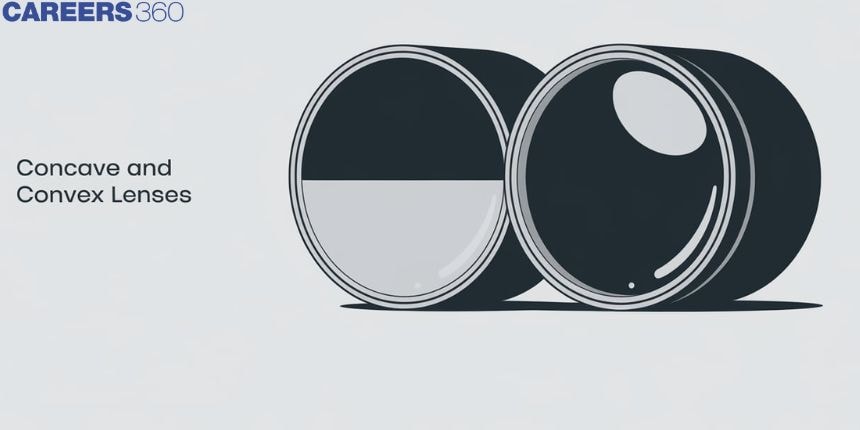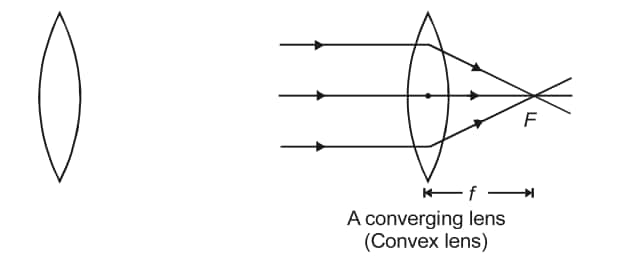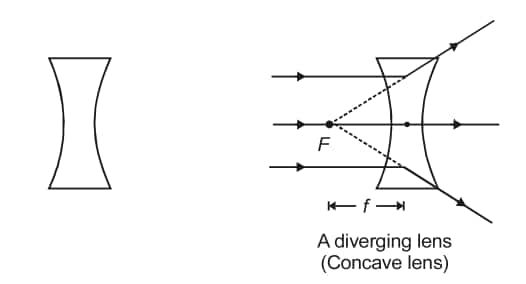Concave and Convex Lenses - Definition, Image Formation, Uses, FAQs
The word "lens" comes from the Latin word "lentil," which refers to the little beans that have been a staple of Mediterranean cuisine since ancient times. Because of the convex shape of lentils, their Latin name was coined for glass with a similar shape.
Lenses are used to focus or scatter light due to the way they refract light that strikes them. The composition, size, thickness, curvature, and combination of lenses employed can vary the amount of light that enters the lens in a variety of ways. Lenses are made for a variety of applications, including cameras, telescopes, microscopes, and spectacles. Other more contemporary gadgets that take advantage of lenses' capacity to diffuse or condense light include copying machines, image scanners, optical fiber transponders, and cutting-edge semiconductor fabrication equipment.
This Story also Contains
- Convex and Concave lens
- Image formation by concave lens
- Image formation by convex lens
- Difference between Concave and convex lenses.

A lens is an optical instrument that, using the concept of refraction, either converges or diverges the light beam that strikes its surface. The converging or diverging of light beams is accomplished using a piece of glass with the proper form. It is shaped so that light rays refract to generate an image.
The lens' power is measured by the amount of convergence or divergence it imparts to the light beams that pass through it.
When these lenses are used together, the result is a sharper image. Concave lenses are used in most eyeglass lenses. Different lenses are used in cameras, telescopes, and microscopes to let humans see the world more clearly.
Also read -
Convex and Concave lens
To create spherical lenses, two spherical transparent surfaces are combined. Spherical lenses can be divided into two categories. Convex lenses are made by joining two spherical surfaces that bulge outward, and concave lenses are made by joining two spherical surfaces that bend inward. The difference between concave lenses is one of the most important. Because the rays converge after passing through convex lenses, they are also known as converging lenses, whereas concave lenses are known as diverging lenses because the rays diverge after passing through them.


Rays falling on concave lenses should follow these guidelines.
1. When a beam obliquely strikes a concave or convex lens image at its pole, it continues on its path.

2. When a ray strikes concave or convex lenses parallel to the principal axis, the reflected ray travels through a focus on the principal axis.

3. When a ray passes through focus and collides with concave or convex lenses, the reflected ray passes parallel to the principal axis.

Image formation by concave lens
- A virtual image is produced at the focus when an object is positioned at infinity. The image is a fraction of the size of the real thing.
- A virtual image is produced between the pole and the focus of the convex lens when an object is positioned at a finite distance from the lens. The image obtained will be significantly larger than the object.
Image formation by convex lens
- A real and highly diminished image is produced at the focus when an object is positioned at infinity.
- A real, inverted, and diminished image is formed between F and 2F when the object is beyond 2F.
- A real, inverted, and same-size image is formed at 2F when the object is at 2F.
- A real, inverted, and magnified image is formed beyond 2F when the object is between F and 2F.
- A real and highly magnified image is formed at infinity when the object is at F.
- A virtual, erect, and magnified image is formed on the same side of the lens when the object is between F and the optical center (O).
Difference between Concave and convex lenses.
|
Properties |
Concave lens |
Convex lens |
|
Look |
The middle of a concave lens is thinner, while the edges are thicker. |
The middle of a convex lens is thicker than the edges, while the margins are thinner. |
|
Also known as |
Diverging lenses |
Converging lenses |
|
Focal length |
Negative |
Positive |
|
Incident rays |
The incident rays are diverged away from the main axis. |
The incident rays converge towards the primary axis. |
|
Applications |
Used in glasses, some telescopes, and door spy holes, among other things. It's also utilized to remedy a problem with short-sightedness. |
Used in cameras, overhead projectors, projector microscopes, basic telescopes, magnifying glasses, and other devices. It can also be used to correct a long-sightedness condition. |
NCERT Physics Notes :
Uses of Concave Lens:
Concave lens used in glasses. Concave lenses are most commonly used to correct myopia, which is also called near-sightedness.
- Uses of concave lenses in lasers.
- Use of concave lenses in cameras.
- Used in flashlights.
- Concave lens used in peepholes.
Uses of convex lens:
- Used in cameras to focus and magnify images for clear photos and videos.
- Helps correct farsightedness by focusing light on the retina.
- Enlarges the outside view in peepholes for security.
- Magnifies tiny objects in microscopes for observation.
- Enlarges small objects or text with a magnifying glass.
- Projects enlarged images or videos on screens in projectors.
Also, check-
Frequently Asked Questions (FAQs)
The middle of a concave lens is thinner than the edges, while the edges are thicker. A convex lens has a thicker center and thinner margins. Used in cameras, overhead projectors, projector microscopes, basic telescopes, and magnifying glasses, among other things.
Objects appear larger and further away when viewed via a convex lens. A concave lens distorts the perspective of objects, making them appear smaller and closer.
A concave lens always forms a virtual, erect, and diminished image on the same side of the lens as the object.
A lens combination. When two lenses are combined, the first creates an image that is then used as the subject of the second lens. The magnification of a combination is the ratio of the resulting image's height to the object's height.